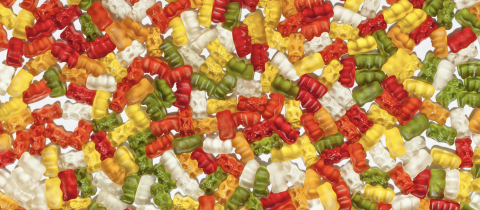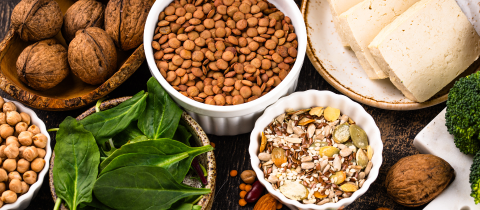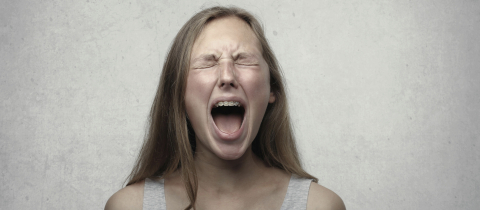This past year, I’ve spent an unreasonable amount of time thinking about bones. Talking about bones. Reading about bones. Writing about bones. Basically, becoming the unofficial bone correspondent among my friends and family (whether they liked it or not). Why? Because I was doing my honours research project on the bone health of endurance athletes — and in the process, I fell head first into the endlessly fascinating, criminally underappreciated world of bone science.
What I quickly realized during this process — after ambushing loved ones with an onslaught of unsolicited bone trivia — is that most people don’t know much about bones. They know they’re hard. They know milk is somehow involved in maintaining their strength. And they know that if someone’s bone is visible on the outside, it’s time to panic.
But bones? They’re so much more than that. Over the past year, I’ve learned a ton of things about them that I didn’t previously know but absolutely should have — and now I’m passing the torch (or femur?) onto you. This article is the TL;DR of my year-long boney deep dive. No jargon, no lectures — just the best bits of what I’ve learned, to help you understand and strengthen your skeleton.
Bone Basics: More Than Just Sticks
Despite their rock-solid reputation, bones are surprisingly dynamic — always remodeling, reshaping, and renewing themselves from the inside out. This process is facilitated by specialized bone cells that are constantly working behind the scenes to make sure your bones remain healthy. On the microscopic level, these cells break down worn-out sections of bone, making way for stronger, healthier bone to be built.
This ongoing process is known as bone remodeling, and it’s governed by something called the mechanostat theory. Think of your bones like a thermostat — but for strength. Apply force (say, jumping or weightlifting), and your bones bulk up. But if you neglect them? Well, much like the sea cucumber (which evolved without a skeleton), your bones won’t stick around at full strength if you don’t give them a reason to.
Building the Best Bones: Timing is Everything
Here’s the thing: your bones peak early — but that doesn’t mean the story ends there. The golden window for building strong bones is from childhood through early adulthood. During this time, your skeleton is especially responsive to physical activity and nutrition. Between the ages of 25 and 30, you’ll have reached your peak bone mass — essentially the strongest and most mineral-rich your bones will ever be.
One longitudinal study found that kids who were active during adolescence had 8–15% more bone mineral content, and that advantage persisted well into their 20s and beyond. In other words, what you do early in life lays the foundation for how strong your bones will be.
But here's the good news: just because bone-building is front-loaded in your lifetime doesn’t mean exercise stops mattering after your 30th birthday. Far from it. Staying active later in life helps maintain the bone you have and slow down age-related loss — something we’ll dive into later in the article.
What Happens as We Age?
Unfortunately, bone remodeling isn’t always balanced. After around age 40, the bone-breakdown side of the equation starts pulling ahead. And for women, menopause speeds up this process dramatically due to dropping estrogen levels, drastically increasing the risk of osteoporosis.
But aging doesn’t have to mean fragility. Staying active and getting enough of the right nutrients can slow bone loss and keep your skeleton standing tall.
The Bone Diet: Eat for Strength (Not to Be Confused with Eating Bones)
So, what should you be eating to keep your bones strong and healthy? Start with calcium and vitamin D — the dynamic duo of bone nutrition. During adolescence, when bones are growing rapidly, the target is high: around 1,300 mg of calcium per day. For adults aged 19 to 50, the goal is 1,000 mg of calcium and 400 to 800 IU of vitamin D daily. Once you hit 50, your bones need even more support — aim for 1,200 mg of calcium and 800 to 1,000 IU of vitamin D each day to help slow age-related bone loss. Dairy is a solid source of both nutrients, but leafy greens, tofu, fortified juices, and even sunlight (after you’ve put in your sunscreen) are also your bone's best friends.
Why Your Bones Belong in Your Workout Plan
When most people hit the gym, they’re thinking about building muscle, burning fat, or boosting heart health. Bones? Not so much. But ironically, it's osteoporosis and joint pain — not biceps strength or VO₂ max — that end up sidelining many people as they age. Poor bone health can limit mobility, increase the risk of falls, and drastically reduce quality of life. The good news? Exercise is one of the best tools you have to keep your skeleton sturdy.
Here’s your skeleton’s favorite workout routine:
- Weight-bearing activities: Think walking, running, tennis, dancing.
- Resistance training: Lifting weights or bodyweight exercises like push-ups.
- Balance training: Tai chi or wobble board fun to reduce fall risk (especially important as we age).
Public health recommendations tell you to aim for 150 minutes of moderate exercise per week. For added benefit, strength training at least twice a week is encouraged — not just for muscles, but for bones too.
In Summary: Don’t Ignore Your Skeleton
Your bones may be silent, but they are paying close attention — to how you move, what you eat, and how you care for yourself throughout your life. Investing in your skeletal health isn’t just about preventing fractures; it’s about preserving mobility, independence, and quality of life well into old age.
So, nourish your body, stay active, and remember: the steps you take today — whether it’s a jog, a dance, or a few extra greens on your plate — are the foundation of the strong, resilient frame you’ll depend on for decades to come.
Sophie Tseng Pellar recently graduated from McGill University with a Bachelor of Science (BSc) degree in the physiology program. She will be continuing her graduate studies in the surgical and interventional sciences program at McGill. Her research interests include exercise physiology, biomechanics and sports nutrition.
Part of the OSS mandate is to foster science communication and critical thinking in our students and the public. We hope you enjoy these pieces from our Student Contributors and welcome any feedback you may have!







